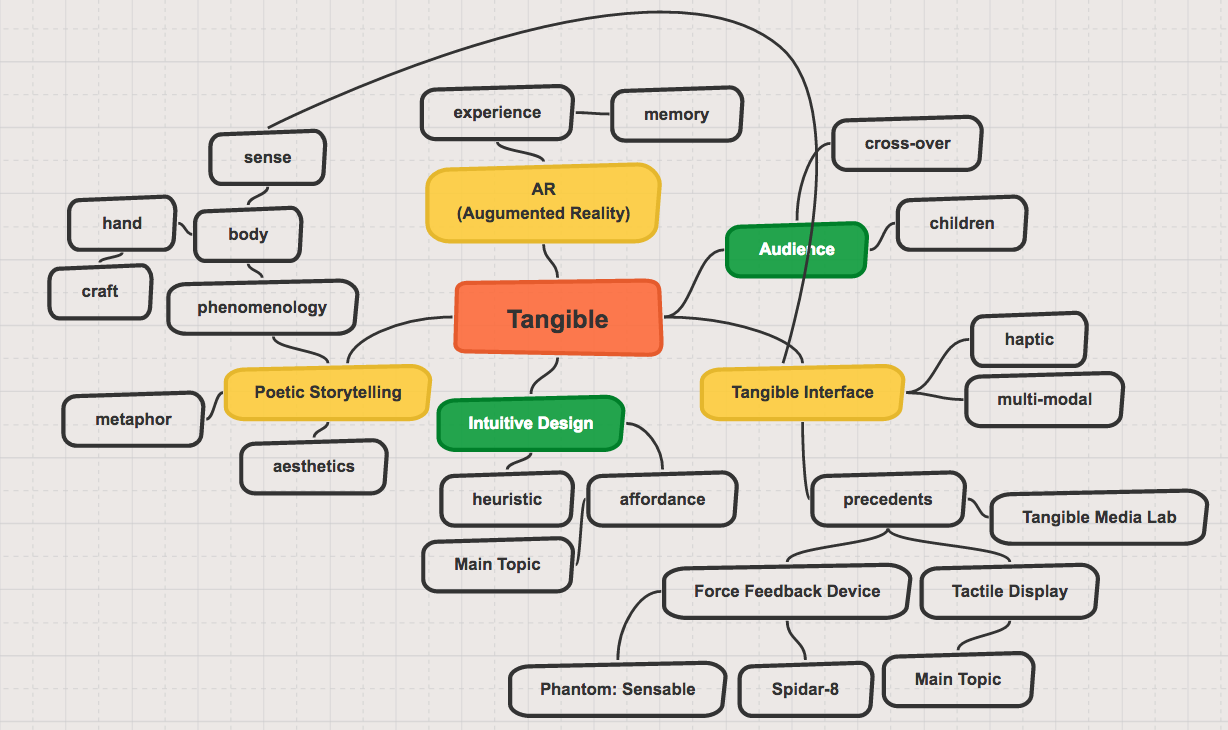[wk7/Final] Pre-midterm Presentation
March 15, 2017
Design Proposal
I suggest an interactive touch-and-feel AR MR experience
to make audience to feel the materiality of virtual objects
by using an affordance of microscope.

The fundamental problem of virtual reality is how to combine the communicational medium with the physical body. So I decided to create an interface in which we manipulate objects of the digital world using physical means. Because I believe the benefit of using our body in the real world.
Precedent01: Touch and Feel Books
Touch and Feel Books are aimed specifically at helping children develop knowledge while increasing the use of their senses, appeal is lost to older generations who more than likely already possess the skills being taught. One of the key advantages to teaching senses and vocabulary through the use of touch and feel books is the connection a child can gain by instantly being rewarded with the texture that the word describes.
Precedent02: Tangible / Haptic Interfaces
Early researchers on haptic interface have been developed mainly for force feedback device, and many devices have been commercialized. However, research on the expression of textures such as small patterns and roughness on the surface is still at a basic level.
Vibrotactile display using vibration is widely used where it is easy to hand, but stimulation is transmitted quickly, and only a simple signal is required. Pin-array method is the most commonly used method because it can directly transmit the pattern of the surface because the pins are shaped in the skin and stimulate in the vertical direction.
These methods are used in particular for the development of Braille displays.
Force Feedback Devices
Phantom is a motorized device that applies force feedback on the user’s hand, allowing them to feel virtual objects and producing true-to-life touch sensations as user manipulates on-screen 3D objects.
The SPIDAR-8 has eight fingertip attachment devices in which each fingertip attachment device is connected with three strings. The SPIDAR-8 calculates a 3D position of each fingertip using the lengths of three strings connecting to that fingertip attachment device, and controls tensions of three strings to display a force feedback when the position of any finger comes into contact with the virtual object.
Tactile Displays
inFORM is a Dynamic Shape Display that can render 3D content physically, so users can interact with digital information in a tangible way. inFORM can also interact with the physical world around it, for example moving objects on the table’s surface.
A surgeon, often uses palpation, and with that his sense of touch, to make decisions in open operation. They feel the pressure distribution on the surface of their finger and can observe a number of features in the tissue. The aim of this research is to make tactile feedback available during minimally invasive surgery.